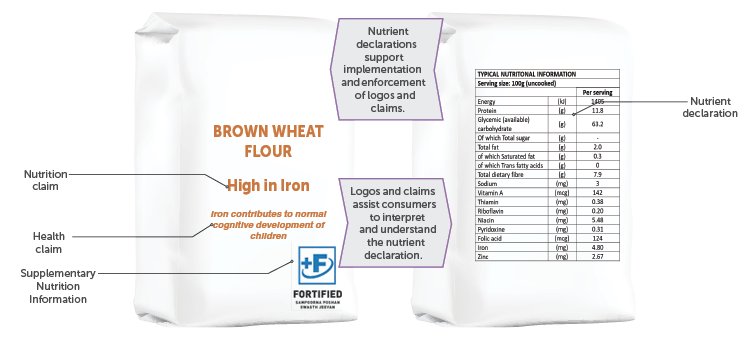
How can nutrition labelling support large-scale food fortification?
What is the problem?
Malnutrition in all its forms – including nutritional deficiencies – is a leading cause of death and disability globally. Food fortification is a proven and cost-effective intervention to address nutritional deficiencies. Large-scale food fortification (LSFF) is the practice of adding minerals or vitamins to commonly consumed foods i.e., staple foods such as salt, flours, oil, and rice during industrial processing to increase their nutritional value and deliver potential health benefits to populations.
Nutrition labelling has the potential to help achieve public health goals by improving the transparency around food product contents, including the contents of fortified foods.
What did we do?
The George Institute for Global Health was commissioned by the Bill and Melinda Gates Foundation to study how nutrition labelling regulations act as a barrier or an enabler to fortification programs in Ethiopia, Indonesia, Kenya, Nigeria, Pakistan, Philippines, South Africa, Thailand, and Vietnam.
We also examined regulations in the United States and the European Union and relevant global standards and guidelines for comparison.
We used our findings to recommend how nutrition labelling regulations could be improved to accelerate the public health impact of fortification programs.
What labelling did we examine?
We focused on three types of nutrition labels as shown in Figure 1.
 |
Figure 1
What did we find?
Effective nutrition labels accurately inform consumers about the nutritional quality of foods, including the presence or absence of micronutrients in fortified foods. This has potential to increase demand and consumption of fortified foods. Best-practice labelling regulations also create a level playing field for industry to market and communicate the nutritional quality of their foods, and to improve nutritional quality given the transparent display of this information. Finally, labels help government to communicate the benefits and quality of fortified foods to the public in line with their public health policies, and act as a tool to support monitoring and enforcement of regulations to improve the healthiness of the food supply.
Our findings include recommendations for best-practice in the three forms of labelling in Figure 1, and recommendations for good governance at all stages of regulatory development, implementation, and enforcement to maximise the public health impact of food labels.
Read more here:
- Detailed policy report (sections below):
- Executive Summary and Structure and navigation of the report
- SECTION 1: Labelling, fortification, and a theory of change
- SECTION 2: The interaction of nutrition labelling and LSFF
- SECTION 3: Global and country (and relevant regional) nutrition labelling regulatory regimes
- Annexure 1: Framework for analysing and improving the performance of nutrition labelling regulations
- Annexure 2: Nutrition labelling for fortified foods in Nigeria (example fact sheet)
- Annexure 3: Template fact sheet that can be used to detail nutrition labelling requirements for fortified foods in a geography. An editable version of this file is available on request.
- Executive Summary and Structure and navigation of the report
- Country fact sheets on nutrition labelling for fortified foods to promote industry compliance:


